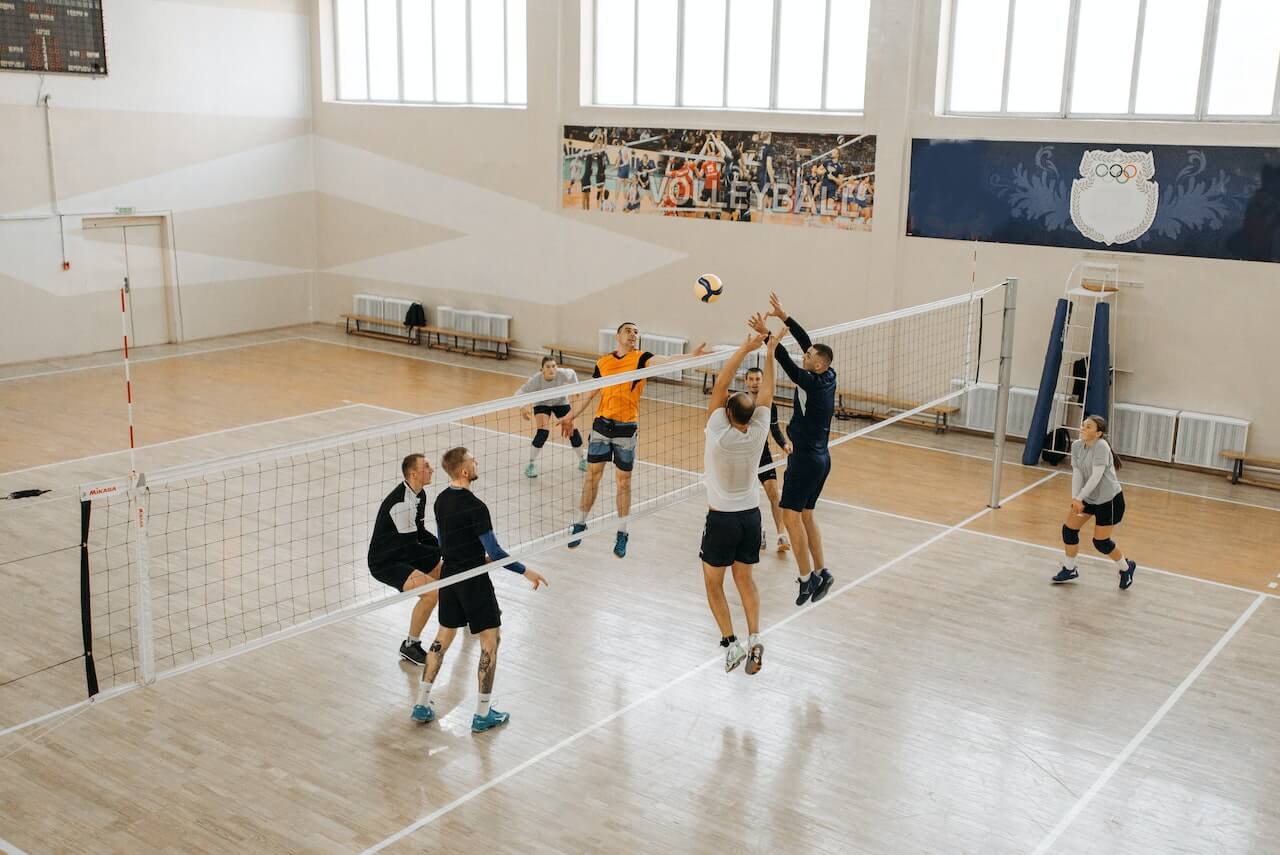Volleyball is a popular sport played by millions of people around the world. It is a fast-paced game that requires quick reflexes, agility, and teamwork. One of the most important aspects of volleyball is the position that each player is assigned to. Each position has a specific role and responsibility that contributes to the success of the team.
The six positions in volleyball are setter, outside hitter, opposite hitter, middle blocker, libero, and defensive specialist. The setter is responsible for setting the ball for the hitters to attack. The outside hitter and opposite hitter are the primary attackers and are responsible for scoring points. The middle blocker is responsible for blocking the opposing team’s attacks. The libero and defensive specialist are responsible for digging and passing the ball.
Setter Position
The setter is one of the most important positions in volleyball. They are responsible for setting up the ball for their teammates to hit over the net. A good setter needs to have quick reflexes, good hand-eye coordination, and excellent decision-making skills. They should also be able to communicate effectively with their teammates.
The setter is usually positioned in the front row, near the net. They are the only player who is allowed to touch the ball with their hands above their head. This means that they are responsible for setting up the ball for their hitters to spike over the net. The setter needs to be able to read the game and make quick decisions about where to set the ball.
One of the key skills of a good setter is accuracy. They need to be able to set the ball exactly where their hitter wants it, whether that’s a high set for a powerful spike or a low set for a quick tip over the net. This requires a lot of practice and skill, as well as a good understanding of their teammates’ abilities.
Another important aspect of the setter position is leadership. The setter is often considered the quarterback of the team, as they are responsible for directing the offense and making sure everyone is in the right position. They need to be able to communicate effectively with their teammates and provide encouragement and support when things aren’t going well.
Libero Position
The libero position is a unique position in volleyball that was introduced in 1998. The libero is a defensive specialist who is allowed to replace any back-row player without counting as a substitution. This means that a team can have two liberos in a game and can switch them in and out as many times as they want.
The primary role of the libero is to play defense and to receive serves. They are not allowed to serve, block, or attack, but they can set the ball if it is the first contact. The libero wears a different colored jersey than the rest of the team to make them easily identifiable to the referees.
The libero position is often filled by a player who is shorter than the rest of the team but has excellent defensive skills. The libero can be a game-changer for a team, as they can make incredible saves and keep the ball in play. The libero is also responsible for communicating with the rest of the team and directing the defense.
Outside Hitter Position
The outside hitter, also known as the left-side hitter, is responsible for attacking from the left side of the court. They are typically the primary offensive weapon, as they have the most opportunities to attack. The outside hitter must be able to hit from various angles and distances from the net, making it a versatile position.
Aside from attacking, the outside hitter must also be able to pass, serve, and play defense. They are usually the first line of defense in the back row, and must be able to dig hard-driven balls from the opposing team.
Communication is key for the outside hitter, as they must work closely with the setter to coordinate their attacks. They must also be aware of their surroundings and anticipate the opposing team’s movements to make effective plays.
Some key skills for a successful outside hitter include:
- Powerful hitting ability from various angles and distances
- Strong defensive skills, including digging and blocking
- Accurate passing and serving
- Quick reflexes and good court vision
Overall, the outside hitter is a crucial position in volleyball, requiring a combination of offensive and defensive skills. A strong outside hitter can make a significant impact on the game and help lead their team to victory.
Opposite Hitter Position
The opposite hitter position, also known as the right-side hitter, is one of the most important positions in volleyball. This player is responsible for attacking from the right side of the court and must be able to hit with power and accuracy.
Opposite hitters are typically taller than other hitters and have a strong vertical jump. They must also be able to block effectively, as they are positioned opposite the team’s middle blocker.
One of the key roles of the opposite hitter is to provide balance to the team’s offense. While the outside hitter typically receives more sets, the opposite hitter must be ready to step up and take a swing when necessary.
When playing defense, the opposite hitter must be able to read the opposing team’s hitters and adjust their positioning accordingly. They must also communicate effectively with their teammates to ensure that everyone is in the right position.
Overall, the opposite hitter is a crucial part of any volleyball team. They must be able to attack, block, and play defense at a high level in order to contribute to the team’s success.
Middle Blocker Position
The middle blocker position is a crucial role in volleyball. This player is responsible for blocking the opposing team’s attacks and closing the gap between the left and right blockers. The middle blocker must also be able to quickly transition from defense to offense and hit the ball effectively.
In order to be a successful middle blocker, players must have excellent footwork and timing. They need to be able to read the opposing team’s hitters and anticipate where the ball will be hit. Middle blockers must also be able to jump high and reach far to block the ball.
Communication is key for the middle blocker position. They need to work closely with the other blockers and the libero to ensure that the defense is set up properly. They must also communicate with the setter to ensure that they are in the correct position for an effective attack.
It is important for middle blockers to be versatile players. They must be able to hit from a variety of positions and angles, and be able to adjust their approach based on the situation. They must also be able to play well under pressure and maintain their focus throughout the game.
| Skills | Attributes |
|---|---|
| Blocking | Height, Timing, Footwork |
| Offense | Jumping Ability, Hitting Accuracy, Versatility |
| Defense | Quickness, Reading Ability, Communication |
The middle blocker position is a challenging but rewarding role in volleyball. With the right skills and attributes, players can become effective and valuable members of their team.







